-
 Bitcoin
Bitcoin $78,460.7755
-4.88% -
 Ethereum
Ethereum $1,558.5692
-11.54% -
 Tether USDt
Tether USDt $0.9994
0.02% -
 XRP
XRP $1.8772
-9.65% -
 BNB
BNB $551.3710
-4.96% -
 USDC
USDC $0.9999
0.01% -
 Solana
Solana $105.7177
-8.11% -
 Dogecoin
Dogecoin $0.1473
-8.99% -
 TRON
TRON $0.2275
-4.91% -
 Cardano
Cardano $0.5731
-8.32% -
 UNUS SED LEO
UNUS SED LEO $8.9347
-1.29% -
 Toncoin
Toncoin $3.0026
-9.25% -
 Chainlink
Chainlink $11.2237
-8.26% -
 Stellar
Stellar $0.2300
-8.37% -
 Avalanche
Avalanche $16.4153
-4.20% -
 Shiba Inu
Shiba Inu $0.0...01131
-4.94% -
 Sui
Sui $1.9699
-5.74% -
 MANTRA
MANTRA $6.2737
1.56% -
 Hedera
Hedera $0.1441
-6.80% -
 Polkadot
Polkadot $3.6006
-7.40% -
 Bitcoin Cash
Bitcoin Cash $272.0494
-7.59% -
 Dai
Dai $0.9999
0.00% -
 Litecoin
Litecoin $70.2187
-10.82% -
 Ethena USDe
Ethena USDe $0.9986
-0.03% -
 Bitget Token
Bitget Token $4.0633
-6.47% -
 Pi
Pi $0.5819
-6.56% -
 Hyperliquid
Hyperliquid $11.0739
-2.52% -
 Monero
Monero $199.4060
-5.67% -
 Uniswap
Uniswap $5.1122
-8.93% -
 OKB
OKB $51.0005
-5.20%
What is Developer Fund?
A Developer Fund in crypto ecosystems supports blockchain project development by financing salaries, R&D, and operations, ensuring growth and sustainability.
Apr 07, 2025 at 08:21 pm
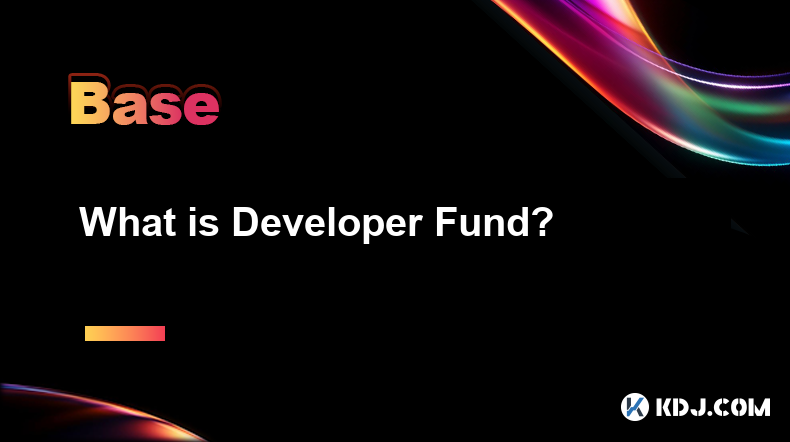
A Developer Fund in the cryptocurrency ecosystem is a pool of resources, typically in the form of cryptocurrency, set aside to support the development and maintenance of a blockchain project. These funds are crucial for the growth and sustainability of blockchain networks, as they enable developers to work on improving the protocol, fixing bugs, and adding new features without the immediate pressure of financial constraints. The concept of a Developer Fund is integral to many decentralized projects, as it helps ensure that the project remains active and evolves over time.
Purpose of a Developer Fund
The primary purpose of a Developer Fund is to finance the ongoing development of a blockchain project. This includes paying for the salaries of core developers, funding research and development initiatives, and covering operational costs such as hosting and infrastructure. By having a dedicated fund, projects can attract and retain talented developers who are essential for the project's success. Additionally, a Developer Fund can be used to incentivize community contributions, such as through bounties for bug fixes or new feature implementations.
Sources of Funding
Developer Funds are typically sourced from various avenues within the cryptocurrency ecosystem. One common method is through the allocation of a percentage of the total token supply at the time of the project's launch. For example, a project might reserve 10% of its total token supply for the Developer Fund. Another source of funding can come from transaction fees, where a small portion of each transaction is directed to the fund. Additionally, some projects may receive donations or grants from other organizations or individuals who are interested in supporting the project's development.
Governance and Management
The governance and management of a Developer Fund are critical to its success. Many projects employ a decentralized governance model, where decisions about how the fund is used are made by the community through voting mechanisms. This can be facilitated through on-chain governance systems, where token holders can vote on proposals to allocate funds to specific development initiatives. Alternatively, some projects may have a more centralized approach, with a dedicated team or foundation managing the fund and making decisions about its use.
Examples of Developer Funds
Several prominent blockchain projects have established Developer Funds to support their ecosystems. For instance, Tezos has a self-amending protocol that includes a built-in mechanism for funding development through a portion of the block rewards. Similarly, Decred allocates 10% of the block rewards to a treasury that is used to fund development and other community initiatives. These examples illustrate how Developer Funds can be structured and managed to support the ongoing development of a blockchain project.
Challenges and Considerations
While Developer Funds are essential for the growth and sustainability of blockchain projects, they also come with challenges and considerations. One key challenge is ensuring that the funds are used effectively and transparently. Projects must establish clear guidelines and accountability mechanisms to ensure that the funds are being used for their intended purpose. Additionally, there can be debates within the community about how the funds should be allocated, which can lead to conflicts and delays in decision-making. It is crucial for projects to have robust governance structures in place to navigate these challenges and ensure that the Developer Fund serves its intended purpose.
Impact on the Ecosystem
The existence of a Developer Fund can have a significant impact on the broader cryptocurrency ecosystem. By providing financial support for development, these funds help to drive innovation and improve the functionality of blockchain networks. This, in turn, can lead to increased adoption and usage of the network, as users benefit from the enhancements and new features that are developed. Furthermore, a well-managed Developer Fund can enhance the project's reputation and attract more developers and investors, creating a positive feedback loop that supports the project's long-term success.
Frequently Asked Questions
Q: How can a project ensure the transparency of its Developer Fund?
A: To ensure transparency, a project can implement several measures. These include regular reporting on how the funds are being used, publishing financial statements, and using blockchain technology to track and verify transactions. Additionally, involving the community in decision-making through voting mechanisms can enhance transparency and accountability.
Q: Can individuals contribute to a Developer Fund?
A: Yes, many projects allow individuals to contribute to the Developer Fund through donations. These contributions can be made in the project's native cryptocurrency or other supported assets. Some projects also offer incentives, such as tokens or recognition, to encourage individual contributions.
Q: What happens if a Developer Fund runs out of money?
A: If a Developer Fund runs out of money, the project may need to seek alternative sources of funding, such as additional token sales, grants, or partnerships. In some cases, the project may need to scale back its development efforts or prioritize certain initiatives over others. It is important for projects to have a sustainable funding model to avoid running out of funds.
Q: How does a Developer Fund differ from a community fund?
A: A Developer Fund is specifically focused on supporting the development and maintenance of a blockchain project, whereas a community fund may have a broader scope, including supporting community initiatives, marketing efforts, and other activities that benefit the project's ecosystem. While there can be overlap between the two, a Developer Fund is primarily dedicated to technical development.
Disclaimer:info@kdj.com
The information provided is not trading advice. kdj.com does not assume any responsibility for any investments made based on the information provided in this article. Cryptocurrencies are highly volatile and it is highly recommended that you invest with caution after thorough research!
If you believe that the content used on this website infringes your copyright, please contact us immediately (info@kdj.com) and we will delete it promptly.
- As Ethereum (ETH) Hovers Around $1814 and Dogecoin (DOGE) Stands at $0.072, Whales From Both Ecosystems Are Making a Notable Shift
- 2025-04-07 23:35:11
- DOGE tumbles 4% as Trump’s auto tariffs tank assets linked to Elon Musk
- 2025-04-07 23:35:11
- MANTRA Launches $108,888,888 Ecosystem Fund to Propel RWA Innovation
- 2025-04-07 23:30:12
- Ripple’s XRP Tumbles 15% to a 5-Month Low of $1.64, Liquidations Exacerbate the Plunge
- 2025-04-07 23:30:12
- The MANTRA blockchain ecosystem takes a bold step towards the future of decentralized finance (DeFi)
- 2025-04-07 23:25:11
- WHAT may appear to be small change could, in fact, turn out to be a small fortune
- 2025-04-07 23:25:11
Related knowledge
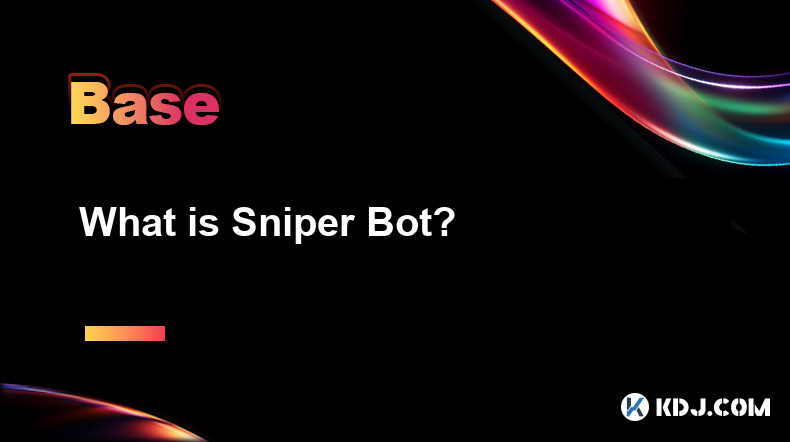
What is Sniper Bot?
Apr 07,2025 at 10:43pm
A Sniper Bot is a type of automated trading software used within the cryptocurrency market to execute trades at optimal times, often milliseconds before other traders. These bots are designed to take advantage of new token listings, price fluctuations, and other market opportunities to buy or sell assets quickly and efficiently. The primary goal of a Sn...
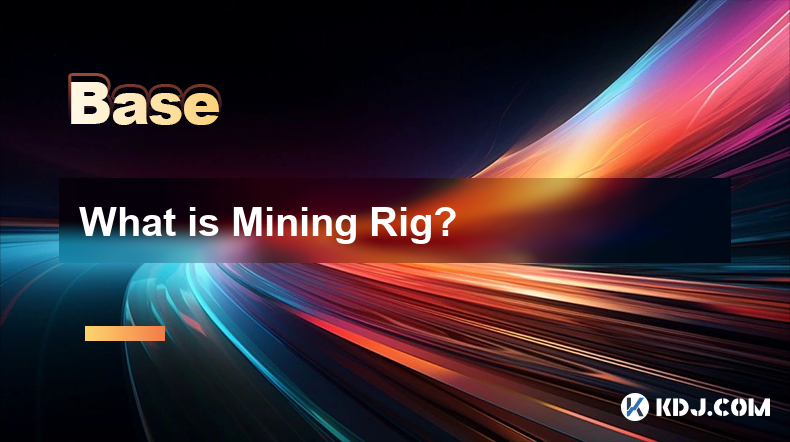
What is Mining Rig?
Apr 07,2025 at 11:08pm
A mining rig is a specialized computer system designed specifically for the purpose of mining cryptocurrencies. Mining, in the context of cryptocurrencies, refers to the process of solving complex mathematical problems to validate transactions and add them to the blockchain. This process requires significant computational power, and a mining rig is buil...
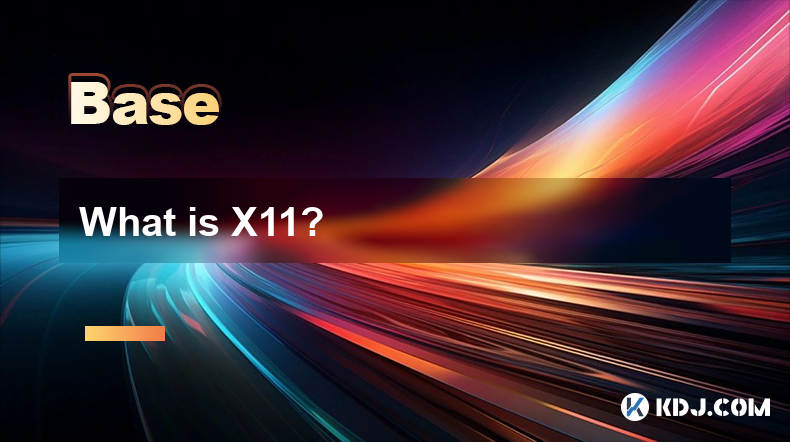
What is X11?
Apr 07,2025 at 09:22pm
What is X11? X11 is a cryptographic hash function used in various cryptocurrencies, most notably in the Dash cryptocurrency. It is designed to provide a high level of security and efficiency, making it a popular choice for blockchain networks. The X11 algorithm is unique because it uses a chain of 11 different hashing algorithms, which enhances its secu...
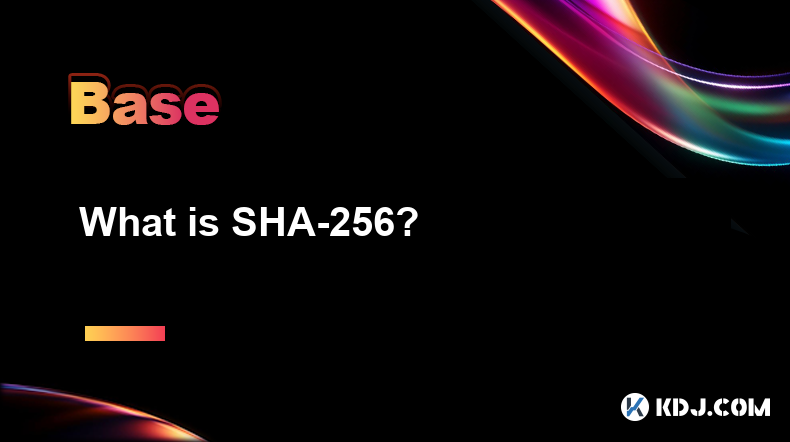
What is SHA-256?
Apr 07,2025 at 11:15pm
What is SHA-256?SHA-256, or Secure Hash Algorithm 256-bit, is a cryptographic hash function that is part of the SHA-2 family of hash functions. It is widely used in the cryptocurrency world, particularly in Bitcoin and other blockchain technologies, for securing data and ensuring the integrity of transactions. This article will delve into the specifics ...
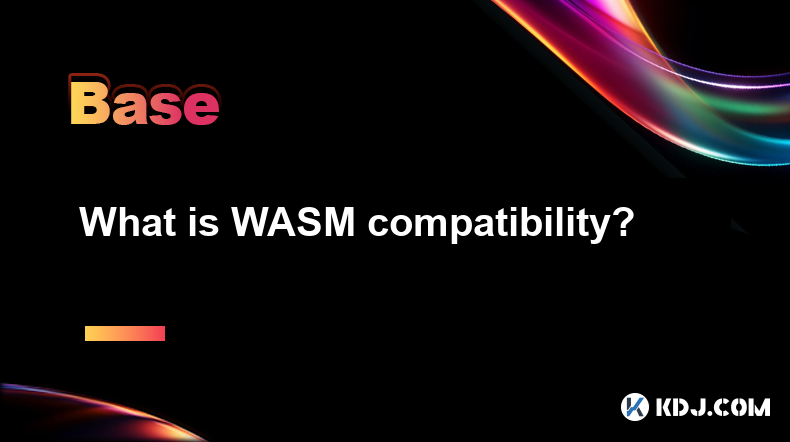
What is WASM compatibility?
Apr 07,2025 at 09:08pm
What is WASM Compatibility? WASM, or WebAssembly, is a binary instruction format for a stack-based virtual machine. It is designed to be a portable compilation target for programming languages, enabling deployment on the web for client and server applications. In the context of cryptocurrencies and blockchain technology, WASM compatibility refers to the...
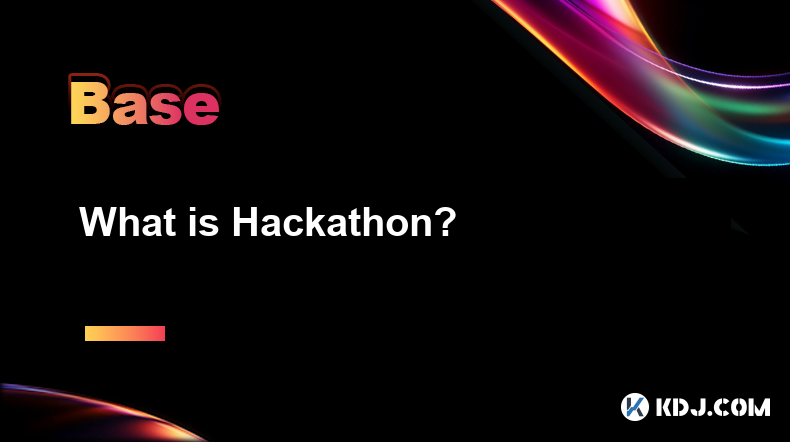
What is Hackathon?
Apr 07,2025 at 10:14pm
A Hackathon is an event where individuals or teams come together to collaborate intensively on software projects, often related to specific themes or challenges. In the context of the cryptocurrency circle, hackathons are frequently organized to foster innovation and development within the blockchain and crypto space. These events bring together develop...

What is Sniper Bot?
Apr 07,2025 at 10:43pm
A Sniper Bot is a type of automated trading software used within the cryptocurrency market to execute trades at optimal times, often milliseconds before other traders. These bots are designed to take advantage of new token listings, price fluctuations, and other market opportunities to buy or sell assets quickly and efficiently. The primary goal of a Sn...

What is Mining Rig?
Apr 07,2025 at 11:08pm
A mining rig is a specialized computer system designed specifically for the purpose of mining cryptocurrencies. Mining, in the context of cryptocurrencies, refers to the process of solving complex mathematical problems to validate transactions and add them to the blockchain. This process requires significant computational power, and a mining rig is buil...

What is X11?
Apr 07,2025 at 09:22pm
What is X11? X11 is a cryptographic hash function used in various cryptocurrencies, most notably in the Dash cryptocurrency. It is designed to provide a high level of security and efficiency, making it a popular choice for blockchain networks. The X11 algorithm is unique because it uses a chain of 11 different hashing algorithms, which enhances its secu...

What is SHA-256?
Apr 07,2025 at 11:15pm
What is SHA-256?SHA-256, or Secure Hash Algorithm 256-bit, is a cryptographic hash function that is part of the SHA-2 family of hash functions. It is widely used in the cryptocurrency world, particularly in Bitcoin and other blockchain technologies, for securing data and ensuring the integrity of transactions. This article will delve into the specifics ...

What is WASM compatibility?
Apr 07,2025 at 09:08pm
What is WASM Compatibility? WASM, or WebAssembly, is a binary instruction format for a stack-based virtual machine. It is designed to be a portable compilation target for programming languages, enabling deployment on the web for client and server applications. In the context of cryptocurrencies and blockchain technology, WASM compatibility refers to the...

What is Hackathon?
Apr 07,2025 at 10:14pm
A Hackathon is an event where individuals or teams come together to collaborate intensively on software projects, often related to specific themes or challenges. In the context of the cryptocurrency circle, hackathons are frequently organized to foster innovation and development within the blockchain and crypto space. These events bring together develop...
See all articles





















































































